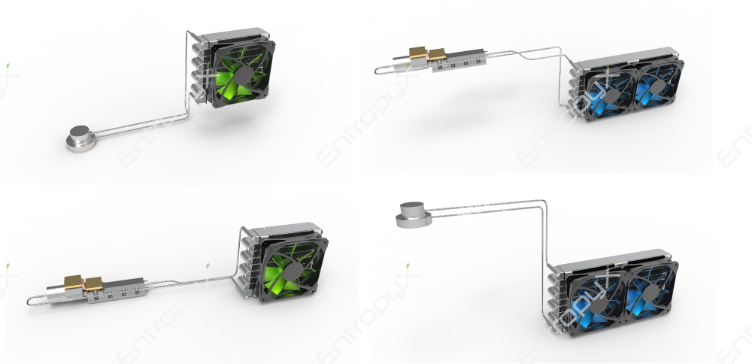Radiator for electronic Chips
With the rapid development of power electronics technology, the performance of electronic devices in various application fields continues to improve, and chips have become one of the indispensable components in electronic products. However, the heat dissipation issues of chips have become increasingly prominent with the better performance and smaller size. Because the heat dissipation directly affects the stability of electronic products, so the failure rate increases exponentially with the high temperature. According to the statistics, the failure of electronic components caused by heat accounts for 65% -80% of the total failure. Therefore, the heat dissipation problem of chips has always been a problem that troubles the industry.
LED generate a large amount of heat during operation, so they lead temperature rise. However, the rise of temperature causes various problems such as spectral shift, color temperature increase, current increase, thermal stress increase, and accelerate aging of fluorescent powder epoxy resin. At present, only 20% -30% of the electrical power of high-powe LED lamps is converted into light energy, while about 70% of the electrical power is converted into thermal energy. The current heat solution for LED lighting has poor temperature uniformity. The heat of LED downlights is concentrated at the bottom of the light, resulting in high temperature in the middle of the radiator and it’s difficult to discharge heat timely.
IGBT, as the mainstream device of new semiconductor devices, plays a crucial role in traditional fields such as industry, communication, 3C electronics, railway, new energy, new energy vehicles, etc. The IGBT modules are not suitable for long-term operation at critical temperatures for the high current and high switching frequency. It will cause significant losses and high heat generation. The heat dissipation performance affects the IGBT modules a lot.
GPU is the computing power support of AI. Currently, the power consumption of a single A100 chip is 400W, and the H100 chip reaches 700W. It is expected that the next generation of products will exceed 1000W. The heat flux density of the chip will reach 200W/cm ²,local heat flux density will exceed 300W/cm ². In contrast, the heat dissipation space has not increased, and the requirements for chip temperature control have not changed, so it’s really hard to control the temperature. The traditional heat dissipation scheme has reached its limit, and more chip application scenarios that required high power consumption and high heat flux density are constantly emerging. For example, ChatGPT requires a large number of high-performance GPUs to support its computing, and these scenarios have put forward very strict requirements for chip thermal control.
EntropyX’s electronic chip radiators based on loop heat pipe was borned under these application backgrounds. It is a new type of electronic chip heat solution with compact structure, reliable performance, convenient and flexible installation, high heat dissipation efficiency, and easy maintenance.
